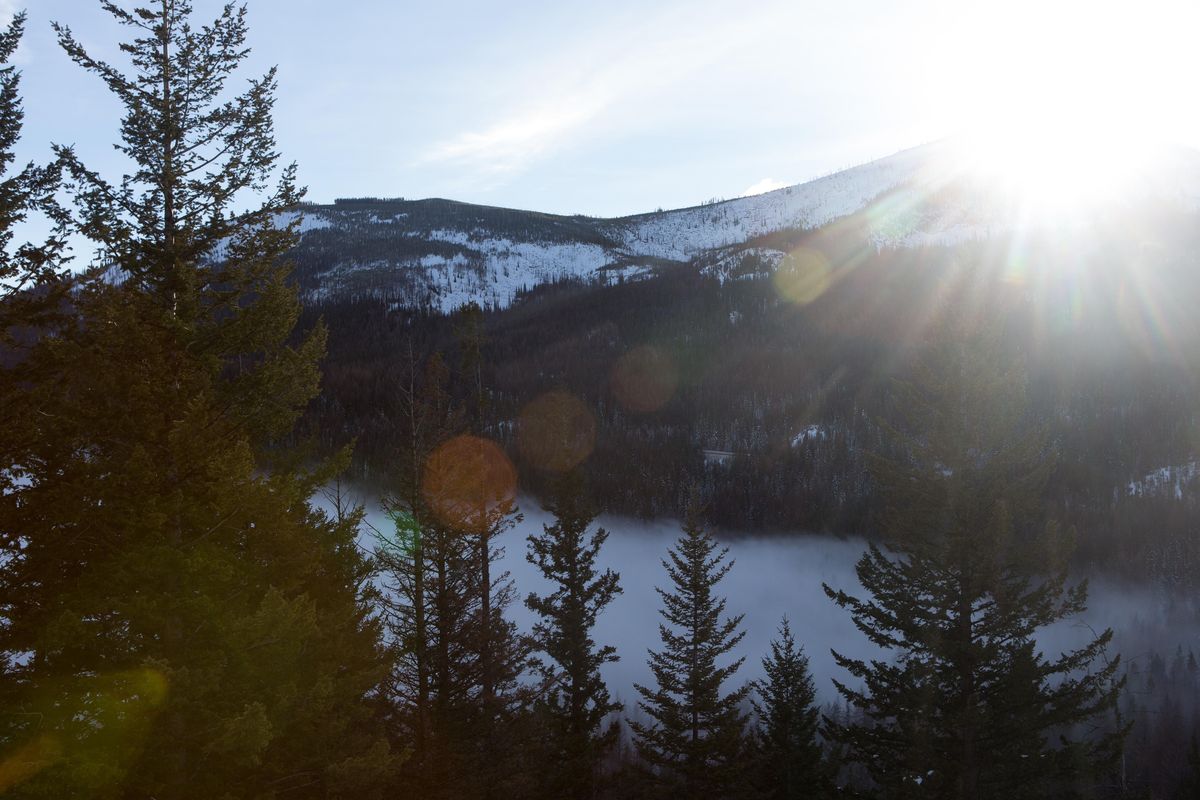One step at a time: A guide to snowshoeing across the region

Within an hour of bravely busting into untracked snow near Wallace my boots were soaked. As were my jeans.
And, I was lost.
It was a sunny, beautiful day in the woods and my thoughts had turned to death. Actually, to be more precise, I was imagining the shame of dying while snowshoeing on a mild winter day.
I was one week into my new gig as The Spokesman-Review’s outdoor editor. What a pathetic way for the replacement to outdoorsman extraordinaire Rich Landers to expire.
Clearly, I didn’t die. As I said, It was a sunny day and my brother and I were lost only in the sense that we weren’t getting where we’d hoped to go – a succinct summation of many things in life.
We hiked back to the car, got some lunch and chalked it up as a learning experience.
Things have progressed nicely from that first, bumbling snowshoe trip. I bought a pair of gaiters. I was gifted some snowshoes and I’ve waterproofed all my jeans.
For most of my life I haven’t been much of a snowsports guy. I have skied a handful of times each year and I bike and walk to work. But I preferred dry rock to snowfields and dusty trails to knee-deep snow.
That’s rapidly changing as I discover the joy of snowshoeing. Whether following an established trail up Mount Spokane or breaking trail on Sherman Pass, it’s a vigorous, fun and quiet way to get outside in the winter. And a blanket of snow turns even oft-trodden areas fresh and exciting.
But as evidenced by my early misadventures, there are some things you need to know.
“It’s the easiest winter sport to learn,” said Holly Weiler, a hiking leader for the Spokane Mountaineers and the Washington Trails Association’s Eastern Washington coordinator. “The most difficult part of snowshoeing is figuring out the good place to take them.”
During good snow years, Weiler said there are a number of in-town snowshoeing options including areas in the Dishman Hills and Antoine Peak.
But this year she said would-be snowshoers best bet is Mount Spokane.
“People who are interested in snowshoeing should just go ahead and get the Sno-Park permit because Mount Spokane is the only thing that has guaranteed snow,” Weiler said.
Sno-Park permits cost $40 and can be purchased at park.state.wa.us/134/Permits. People parking at plowed areas with trail grooming, such as at the Selkirk Lodge at the cross-country ski park, must add a $40 grooming sticker to their Sno-Park Pass.
That pass works at numerous parks throughout Washington, not just Mount Spokane.
In addition to Mount Spokane, Weiler recommends snowshoers check out Sherman Pass, west of Kettle Falls, although Weiler warned that “you have to be a little bit more aware of avalanche potential.”
She also recommended Chewelah Peak, which is a motorized Sno-Park, but she said during the weekday it’s often nearly empty and could be a good place to snowshoe.
Weiler also recommended Frater Lake, which is part of the Pend Oreille lake system. To the south of the Sno-Park she said there is the Granite Peak trail.
In Idaho, Weiler recommends Fourth of July Pass, east of Coeur d’Alene. The trail system requires Park N Ski Stickers – the Idaho equivalent of the Sno-Park Pass.
The key to a fun and successful snowshoe expedition is a combination of proper clothing, gear and food. Weiler normally brings some sort of hot liquid on a hike. She’s even gone as far as packing her Jet Boil to make hot cider.
As for clothing – no cotton, she said. Wear layers and invest in some gaiters. A pair of waterproof boots is also a must.
“It’s amazing how quickly your feet will get wet and cold if you don’t have gaiters,” she said.
Normally, Weiler said, she doesn’t wear snow pants, instead opting for a base layer and wool pants, or a base layer and running pants. Having several upper layers is also important, she said. On hikes, especially ones that gain elevation, the temperature can vary. She often brings an extra shell jacket, especially if she’s bagging a summit.
Oh, and don’t wear jeans.
“That would get really miserable really fast,” Weiler said.
The increased popularity of snowshoeing makes it even more important that participants know and observe trail etiquette.
“When I first started snowshoeing (in 2001) I could arrive at the mountain (Spokane) at 10 a.m. and have first tracks anywhere I wanted to go,” Weiler said. “Those days are over.”
First and foremost dogs must be leashed at Mount Spokane. It’s the law.
“Everybody has a horror story about meeting an off-leash dog,” Weiler said.
Second, do not snowshoe on Nordic ski trails.
And, if you’re hiking on designated snowmobile routes be aware and share the trail.
And finally, Weiler said, if you have to go the bathroom (and no toilet is available) go off trail, at least 200 feet away.
“Going in the middle of the trail is poor etiquette,” she said. “And leaving toilet paper behind is poor etiquette.”
For more information about snowshoe routes on Mount Spokane visit: mountspokane.org. For statewide information visit: wta.org. And for snowshoeing advice, snow condition and trail reports check out the Facebook group Snowshoe Mount Spokane.